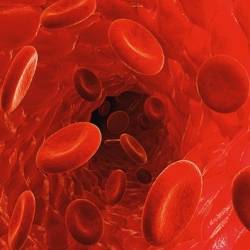
A tiny particle could make it possible to deliver drugs directly to the kidneys and minimize their uptake in other organs. The device, called a mesoscale nanoparticle, could help boost the usefulness of some kidney cancer drugs and might also be used in the treatment and diagnosis of other kidney conditions.
Nanoparticles are polymers, large molecules consisting of many small parts, that typically measure between one and 100 nanometers and can be loaded with drugs or imaging agents. (For comparison, an average human cell measures about 50,000 nanometers in diameter.) They hold promise for many medical applications, partly because they are biocompatible, not harmful to living tissue, and have unusual chemical and physical properties.
At MSK and elsewhere, scientists are seeking to develop new nanoparticles capable of ferrying drugs to tumors and making them stay there long enough to be effective. “Targeting tumors specifically has often proved to be challenging,” says chemist and engineer Daniel Heller, who led the study. “For cancers growing in specific sites, such as the kidneys, the next best thing may be a particle that’s capable of seeking out the right organ.”
The kidney-bound particle is the result of an incidental finding made while studying how the size and chemical properties of some nanomaterials could be modulated to guide their distribution in the body. The goal of the project, a collaboration between Dr. Heller’s group and MSK lung cancer physicians, was to create a nanoparticle capable of targeting cancer drugs to the lung.
The investigators produced a number of nanoparticles of different sizes and chemical properties. They then injected these particles into mice and tracked their location using CT scans and other imaging methods.
The results of the initial experiments were mixed. In particular, one of the particles didn’t behave as expected. The researchers could find only low levels of it in the animals’ lungs, and very little in the liver or spleen, where many similar substances tend to gather. “To our surprise, this particle accumulated almost exclusively in a specific structure of the kidney,” says postdoctoral fellow Ryan Williams, the study’s first author, “and it stayed there until all of it had degraded.”
